Ah, flowers. How they brighten our earth with colour and joy, each having its own characteristics, both mundane, medicinal and magical.
Each flower has its own preferred growing conditions, its own unique bloom, and nearly every flower you can think of has some sort of rich history, medicinal uses and magical associations. We have indeed evolved long after and along with the flowering plants of earth, and they are our friends and allys that bring joy and healing to all without discrimination.
The wonderful world of flowers is a place I want to be, and there is no greater joy then to come to understand a plant through an exploration of its history, where it grows, and its mundane and magical uses.
There is no better time to begin learning then now, so let us begin to explore the world of the common primrose, a native European flower found mostly in the northern hemisphere. You would be surprised at how much rich history can surround a simple and common flower, and how easy it is to bring beauty to any place or garden!
Without further ado, let us come to understand the common primrose in all its mundane, medicinal and magical glory!
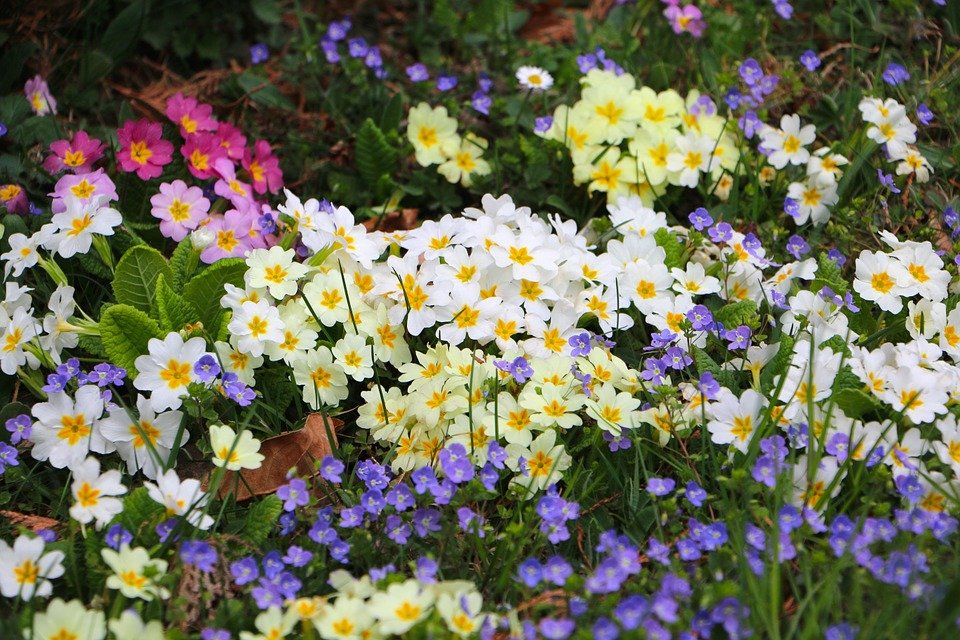
There are so many colors and types of primrose from centuries of selective breeding
The Mundane
There are many many sorts of primrose in the world, coming in all shapes, colours and forms. From the common and original English cowslip (Primula veris), the oxslip (Primula elatior) and the standard Primula vulgaris that come in yellow and golden hues, all the way to the showy and new varieties such as the drumstick primrose (Primula denticulata) or the multicolored and more hardy Primula acaulis.
There are over 400 species in the Primula genus of the Primulaceae family, each a little different and unique. Interestingly, the evening primrose does not belong to this genus at all, but is its own thing entirely, so lets not get the two confused.
"The Latin genus for primroses, primula, comes from the Latin primus meaning first, because they are the first flowers to appear in spring. " (thisandthat93.wordpress.com)
Many sources say that the primrose might be one of Europes favorite garden plants, and it is actually edible, apparently tasting like lettuce (I have yet to try it). These are common and loved plants, rich in history and easy to find and grow too. I always am on the look out for edible flowers to add to salads and to make pretty tea, so I am glad to find that this flower can make its way into my food as well!
Most primroses are perennials that grow up to almost 2 feet tall, though some are smaller and some are much larger. There are also a few biannual species too. These beautiful flowers can be grown in a variety of conditions, in greenhouses or even in the cool mountain ranges, and are often used in ornamental gardens of all sorts, but can also be found in meadows and along woodland streams.
Most species bloom in the spring and can come in nearly any color, depending on the variety, but the originals were all sorts of yellow. Many and most kinds prefer cool weather and moist soil such as next to a stream in the shade, but some like it more dry, hotter and with better drainage. As with people, everyone is a little different in what they prefer, and flowers are no exception.
The primrose has been a popular flower throughout history, capturing the attention of Charles Darwin (who apparently was interested in studying the plants evolution) who studied the wild primroses of Europe and their interesting pollination requirements that make them a little unique.
In short, there are two forms of flowers in the population (called heterostyly) and both are needed for specific pollination, but are not found on the same plant. If you are into the details, you can learn more here at the digital botanical garden. Apparently, this discovery gave Darwin great joy, as the primrose has given joy to many throughout history.
These flowers are so loved by all, that it is no surprise that they have had economic importance. At some point, they were not used for medicine or tea anymore because they could be sold instead and therefore in Europe and even in america during the great depression they were sold and sometimes provided income for the poor. Even today, they are easy to find in many stores where I am from, nearly any grocery store will have them come pre-spring season.
Because of this economic importance and because people loved the flowers, they were bred and selected throughout centuries to produce the amazing array of colors we have access to today, and also to make the new varieties much more hardy then the old originals. Many of the new varieties/hybrids do not produce seed, and have survived entirely because passionate gardeners divided them again and again.
" The purity of the common primrose is hard to beat, but the bright blooms and constant evolution of new forms has allowed this diverse little plant to adapt to suit every taste and garden. " (telegraph)
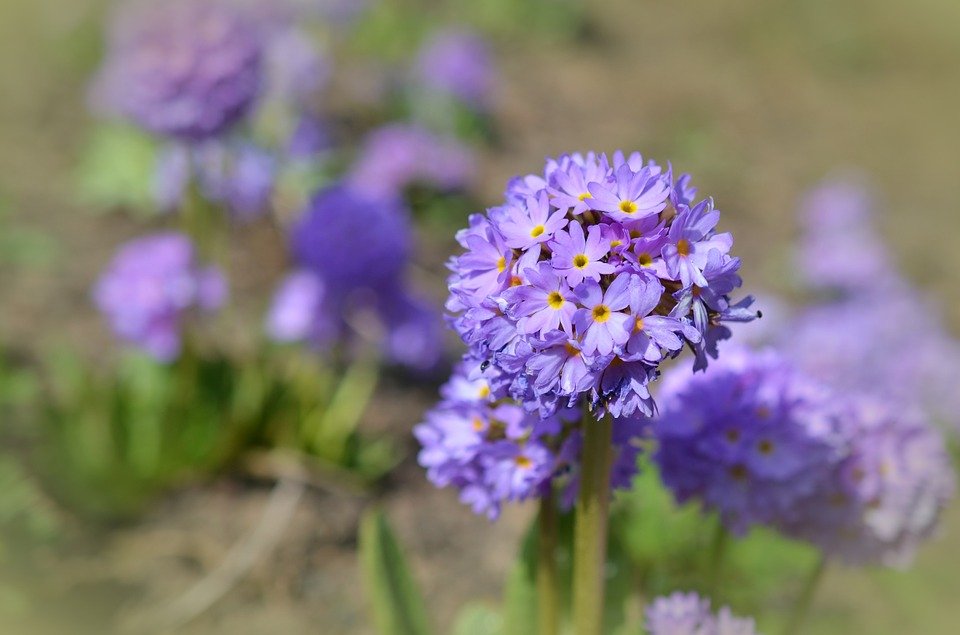
A soft blue 'drumstick' primrose
The Medicinal
The primrose also is a medicinal plant in many folk traditions, and it also being studied now for its medicinal effects in the modern day. It has many actions, as many plants do. In general, it seems like the wild cowslip and Primula vulgaris are the two species mostly used for medicine. This makes sense, since wild weeds are often the most available and commonly used herbal remedies. The whole blooming herb can be used fresh, and same with the dried root (2cnd or 3rd year). According to botanical.com
"Both the root and flowers of the Primrose contain a fragrant oil and Primulin, which is identical with Mannite, whilst the somewhat acrid active principle is Saponin."
Primarily primrose seems effective for insomnia and anxiety, restlessness and hysteria due to its slightly sedative (and anti spasmodic) effect meaning that it calms you down and can put you to sleep, even just in tea form. Of all of its uses, it is this that I find the most intriguing and well acclaimed. I also am interested in the claims that it helps with acne, wrinkles and blemishes in cream or oil form (I assume because it is also astringent) because this is a fairly useful application I can make myself.
It also has been used as an exportant (breaks up mucus, exports it out) and as an antispasmodic. This means it might be effective for treating a mucus full cough and cold and reduce any spasms. Pliny the elder talks about it being good for muscular rheumatism, paralysis and gout (botanical.com). I have also read it was used to treat epilepsy, convulsions and cramps of all sorts. It was also used as a safe emetic, meaning it induces vomiting.
One very interesting study published in 2016 is on the the antioxidant (and phenolic, which I think means disinfectant) activity of Primula vulgaris. According to the study, it was indeed effective, but as usual further research is needed in this new area of study. This is pretty exciting, because it gives us a clue that primrose might help fight off cancer and similar things. If you want to read the full study and learn the technicalities, you can find it here.
There are a handful of other medicinal uses that primrose may be effective for, but requires further research and some proper, professional medical advice for use.
Pregnant woman should not use it, and some medications are not good to use with it either, so make sure you are careful and consult an actual medical person before using it.
Personally, I would like to research it a bit more and consider using it for anxiety and insomnia as these effect a lot of people I know, and I would also love to use its leaves and flowers in salads and as candied flowers! (However no salads for chickens, apparently it is poisonous for animals, but not humans). And, if that helps prevent other diseases caused by oxidization, then that is also an added benefit.
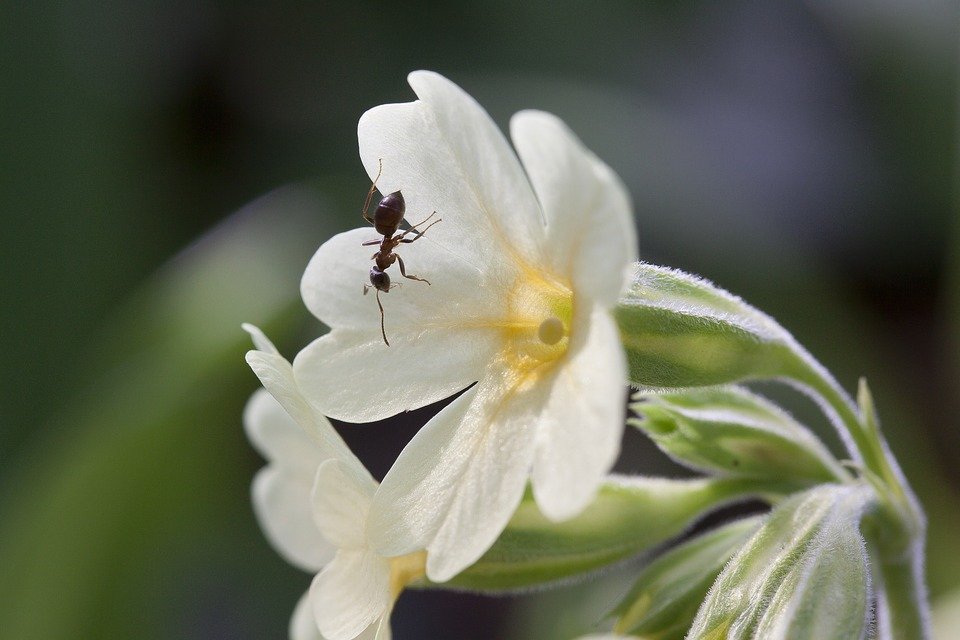
Wild cowslip, pollinated by ants
Over all the primrose is both a useful herb and beautifully diverse and popular flower in the mundane and medicinal worlds, but what about the ever-important magical world?
The Magical
The primrose, native to Ireland and Britain, is very related to fairy lore and love. Shakespeare mentions the flower in a few plays, such as a Midsummer Nights Dream and in Hamlet, as “the primrose path of dalliance” meaning the path to casual and sexual relationships! Already, this gives us a clue to the inner essence of the plant, which is just as important as the physical attributes.
And if I told you that the primrose is associated with the Norse goddess Freya, the element Earth and the sensual planet Venus? I am sure you would have an even better idea of the properties of this plant now.
Freya and Aphrodite/Venus are very similar; goddesses of sexual power, love, femininity and beauty. They were powerful, beautiful and young goddesses, unafraid of pleasure and of their sexual sides. Indeed they owned their sexual power and knew of the sacredness of motherhood and of the female life-cycle. Similarly, the sign of Taurus is ruled by Venus and the Earth is also a grounded and feminine sign, heralding the era of earth goddess worshiping cults and of the establishment of agriculture.
Interestingly as well, the primrose has 5 petals which correlate to the pentacle symbol, also a symbol associated with Venus, female power and sexuality.
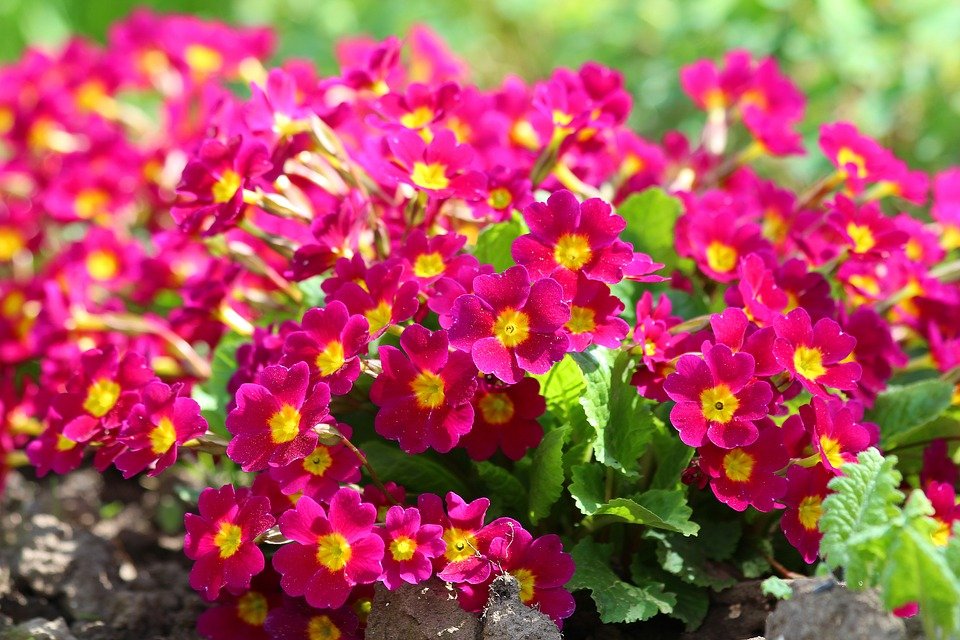
As Anna Franklin points out on her wordpress site, these flowers do also bloom near the pagan fire festival Beltane (May 1st) and signify the transition of seasons. Beltane is a pagan holiday celebrating fertility and love, often the time when a young romance strikes and everyone wants to pro-create. This is also a time of initiation and purification, as well as a time for rituals to ensure a good harvest in the coming season, and therefor protection from hunger and ailments the following winter.
This relates entirely to the flower symbology of the primrose in the Victorian era, that of youth and young love! A primrose means "I can't live without you" and also symbolizes soft things like gentleness and bashfulness, but also inconsistency and neglected merit. Although the Victorian age was a lot more romantic, I am sure the ancient pagans hoped for young and bountiful crops, saying 'I cant live without this harvest!'
The wildflower also may symbolize the beloved guest and are associated with the sacred feminine willow tree and therefore inspiration as well (thewesternisles).
Significantly, the primrose is also associated with fairies in many ways, both good and bad.
It is said eating primroses or putting their oil or flowers on the eyes may induce invisibility and/or give you the ability to see fairies and/or give you access to their world! Apparently you can grow primroses to attract fairies into your garden if you so wish too, but beware;
"Unhealthy primroses upset the fairies and it is not recommended to have cross fairies.
Primroses are said to bring sickness and sorrow if kept indoors, perhaps this is because they generally do not grow healthy indoors and upset the fairies." (thewesternisles)
If you know anything about true Irish fae, you know this is true, do not recommend cross fairies! They are mischievous and magically beings.
I also read that if you do keep primroses indoors, to bring them in bunches of 13 (oops, I did not do that! aha). No wonder this is called the fairy flower of the European wilds. I found that there are a few tales of primroses being involved with entering the fae realm or Otherworld (with some risk!) by placing them on a certain stone, or maybe by entering a primrose circle. Apparently,
" According to legend, if you touch a fairy rock with the right number of primroses in a posy, it will open to fairyland and fairy gifts, but the wrong number opens the door to doom." (annafranklinhearthwitch)
Watch out for that! Don't try this stuff at home, kids.
The primrose really is a beautiful and lovely plant, with plenty of associations and significance. Whether you want a simple flower, a medicinal ingredient or fairy sight, this is the plant for you!
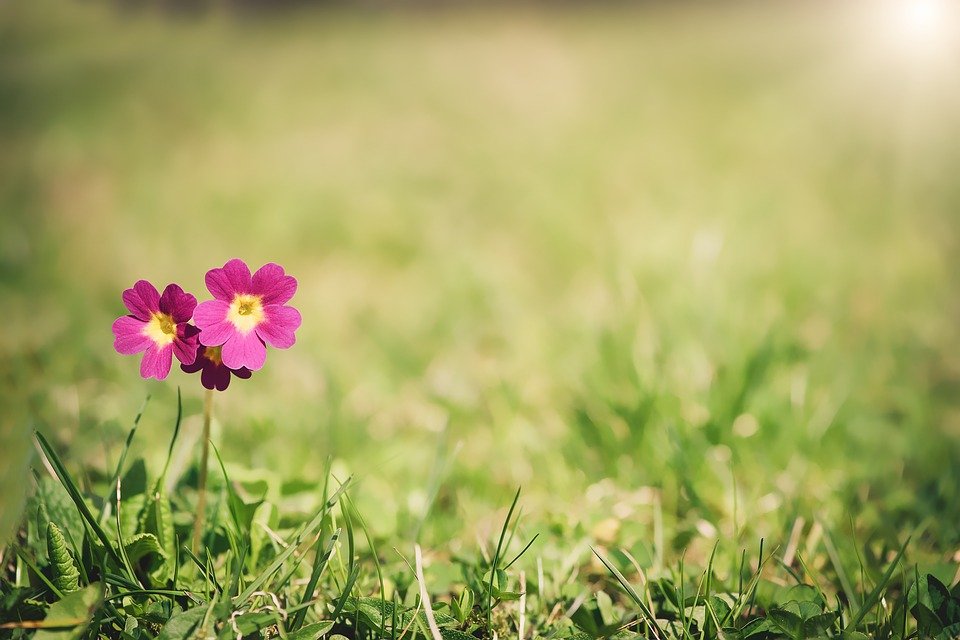
To Conclude
I think that learning about the primrose was a great entry into the wonderful world of angiosperms (flowering plants) and especially into edible but showy flowers! I bought my primrose on impulse, knowing nothing about it (my variety is the Primula acaulis 'danova').
I was very pleasantly surprised at the medical applications of the primrose, and the culinary ones too. I bought my moms boyfriend some for his birthday, and good thing they don't understand flower language, because I did not want to say 'I can't live without you' but maybe I would like to say 'I appreciate your hard work, it is often unappreciated.' or something like that instead.
Who knows, maybe it will bring them some new young love and/or some fairy friends come spring. At least it is guaranteed to bring them colorful flower joy and tea! I am definitely excited to tell them that they are edible and maybe they will use them in salads... you wouldn't guess they are edible just by looks alone, they are so colorful it doesn't seem like they should be eaten, but alas I have another addition to the flower salad of my dreams!
Maybe have found a new plant ally, if I can ever get mine to grow properly. I did bring it inside, silly me, luckily the fairies are sleeping now in the winter haha. I sure do hope that the plant picks up on the vigor before I plant it outside though, because its looking sorta sad!
I hope that you enjoyed learning about the simple primrose flower with me, and I sure hope you love it a little more now too. I hope the world comes to appreciate the beauty of flowers more and more, so we can continue to cultivate them and protect the wild specimens too! I wish we could eradicate any poison that could harm such beautiful beings or destroy their pollinators,
because who would ever want to live in a world without flowers?
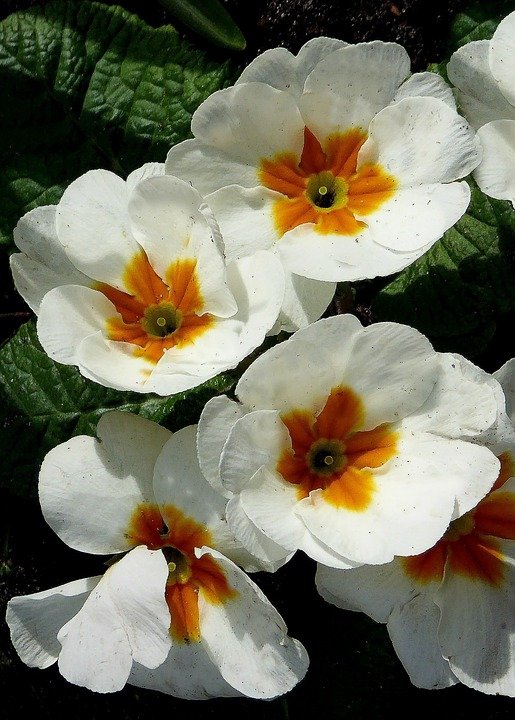
Sources I used: Check these out if you want to learn more!
General info, history: http://digitalbotanicgarden.blogspot.ca/2011/02/primrose-primula-vulgaris-primulaceae.html
http://www.canadianflowerdelivery.com/primrose.aspx
https://www.britannica.com/plant/primrose-plant
https://www.telegraph.co.uk/gardening/11526942/How-the-primrose-can-adapt-to-suit-every-taste-and-garden.html
https://thisandthat93.wordpress.com/2013/10/29/plant-of-the-week/
https://www.gardeningknowhow.com/ornamental/flowers/primrose/growing-primrose-primrose-plants-in-your-garden.htm
http://www.americanprimrosesociety.org/intro/starter-list-of-primula
The scientific study: http://jjnpp.com/en/articles/55322.html
Medicinal info: https://www.botanical.com/botanical/mgmh/p/primro69.html
https://www.herbal-supplement-resource.com/cowslip-herb.html
Musings about the wild primroses: http://glebegarden.co.uk/double-primroses/plant-profiles/primula-pridhamsleigh/
A primrose fairy poem: https://flowerfairies.com/the-primrose-fairy/
Lore and symbolism: https://annafranklinhearthwitch.wordpress.com/2017/05/08/primrose-the-fairy-flower/
https://www.gardenguides.com/128065-primrose-flower-meaning.html
https://www.auntyflo.com/flower-dictionary/primrose
http://thewesternisles.co.uk/wildflowers/primrose.htm
All images are from pixabay or canva

If you enjoyed this post, do not fret, there is more! Check out these links for more posts from @skycae!
For the Love of Discord! - My Top 2 Discord Groups and Others
AstroHerbology, Bridging Herbs and Astrology (A Free Online Mini Courses)
My Bliss in Stillness Steemit Vision Quest
Have You Ever Been to a Viking Bar? Visit Munins Post with Me!
Magically Mundane - Divination Tea and Green Growth

https://discord.gg/QU8ASsh

https://discord.gg/434kYZ
